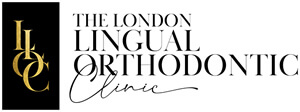Lingual has always been a challenge because it’s not something taught at dental school or even as part of postgraduate studies. It was embraced enthusiastically in the 1980s but at that time, the systems were not sophisticated and many specialists became disillusioned and gave up.
One of the few people to persist with lingual was my colleague, Didier Fillion, who believed that there would always be patients wanting invisible treatment.
I had learned my art from Didier in Paris and he paid me the great compliment of asking if I would work with him in London. At that time, I was planning to open my own practice dedicated to lingual, and I knew that Didier would be the perfect associate in a lingual practice. Kelly Brook and Sadie Frost were among the first in the UK to prove that lingual would be a treatment of choice.
Nevertheless, ten years ago, lingual was quite a lonely furrow to plough. Didier and I were two of only seven people at the inaugural meeting of the British Lingual Orthodontic Society, of which he was a driving force. He went on to become the first Chairman and President.
I’m happy to say that BLOS now has 160 members, it has just been involved in the first ever lingual supplement to the Journal of Orthdodontics and two lingual speakers were on the programme of the British Orthodontic Conference in Manchester. Didier was one of the two, the other being Dirk Wiechmann from Germany.
While it has been lonely sometimes, I have always felt part of a vibrant European community of lingual specialists. I predict the movement will grow ever stronger. It won’t be long, I believe, before all adults who are complex cases will be considering lingual as their preferred option.













